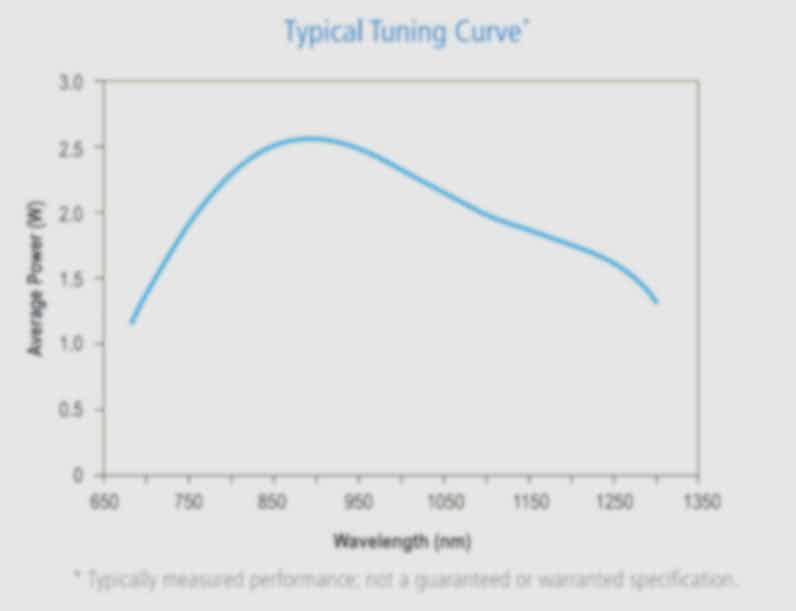items in enquiry
Spectra-Physics InSight X3+
Spectra-Physics InSight X3+
Example Data

InSight X3+ Typical Tuning Curve
Insight X3
- Tuning Range: 680 nm–1300 nm
- Average Power: >1.3 W at 700 nm, >2.4 W at 800 nm, >3.0 W at 900 nm, >2.7 W at 1000 nm, >2.4 W at 1100 nm, >2.1 W at 1200 nm, >1.5 W at 1300 nm
- Pulse Width: <120 fs
- Pre-compensation Dispersion Range: 680 nm: -12,000 fs² to -40,000 fs², 800 nm: 0 fs² to -28,000 fs², 900 nm: 0 fs² to -17,000 fs², 1050 nm: 0 fs² to -13,000 fs², 1300 nm: -3,000 fs² to -11,000 fs²
- Noise: <0.5%
- Repetition rate: 80 MHz ±0.5
- Beam Diameter (1/e²): 1.1 ±0.2 mm
- Beam Divergence, full angle: <1.5 mrad
- Beam Roundness: 1.0 ±0.2 mm
- Beam Astigmatism: <20 %
- Beam Pointing Stability: <350 µrad
- Tuning Speed: >50 nm/sec
- Stability: <±1 %
- Polarisation: >500:1 horizontal
InSIght X3+ Dual
- Tuning range: 1045 nm (fixed)
- Average power: >3.5 W at 1045 nm
- Pulse Width: <170 fs
- Pre-compensation Dispersion Range: Optional1045 nm: – 15,000 fs2 fixed
- Noise: <0.25%
- Repetition rate: 80 MHz ±0.5
- Beam Diameter (1/e²): 1.1 ±0.2 mm
- Beam Divergence, full angle: <1.5 mrad
- Beam Roundness: 1.0 ±0.2 mm
- Beam Astigmatism: <20 %
- Beam Pointing Stability: <350 µrad
- Tuning Speed: >50 nm/sec
- Stability: >500:1 horizontal
